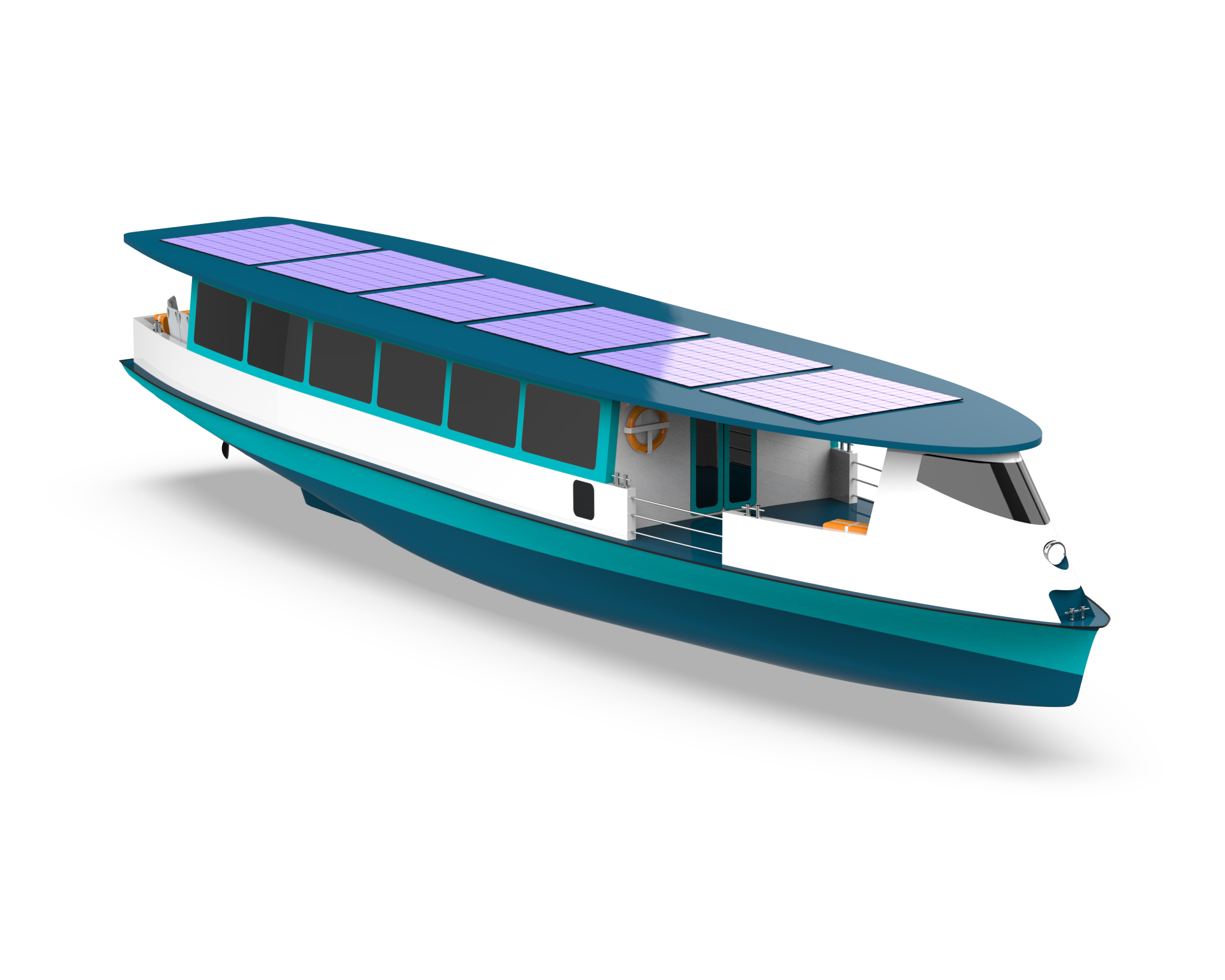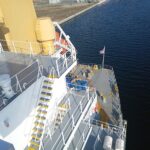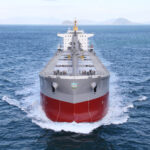-
Via della Fontana 4/a,
34133, Trieste (TS) -
+39 040 9828666
[email protected]

14
Jul 21FARAD – Vaporetto a supercondensatori
- 14 July 2021
VERSIONE IN ITALIANO:
Sea Green Engineering ha completato il concept design di FARAD, il vaporetto full-electric innovativo a supercondensatori (noti anche come ultracondensatori).
Il profilo operativo dei vaporetti è caratterizzato da numerosi picchi di potenza, che si verificano principalmente durante le fasi transitorie di manovra, mentre la potenza media assorbita è generalmente bassa a causa delle limitazioni di velocità nelle acque interne della laguna di Venezia.
Questo tipo di profilo operativo ha spinto il team della Sea Green Engineering ad individuare una tecnologia alternativa alle batterie che, in questo caso, risulterebbero troppo stressate. Quindi, FARAD è stato progettato con un sistema di accumulo energetico basato su supercondensatori. Si tratta di una tecnologia in rapido sviluppo e sempre più usata nel trasporto terrestre per autobus o tram, mentre nel campo navale trova applicazione ancora in poche realtà e principalmente, con la funzione di peak shaving, per diminuire il deterioramento delle batterie.
FARAD si ricarica molto rapidamente e riesce a sfruttare le numerose fermate per l’imbarco e lo sbarco dei passeggeri per accumulare energia. Questo perché all’interno dei supercondensatori non avviene alcuna reazione chimica, al contrario delle batterie. Inoltre, i supercondensatori possono operare per centinaia di migliaia di cicli (anche caratterizzati da frequenti picchi di potenza) senza deteriorarsi.
FARAD permette di avere costi operativi molto bassi, sia rispetto a imbarcazioni tradizionali, con motore a combustione interna, sia rispetto a quelle full electric a batterie.
Nonostante i supercondensatori abbiano una densità energetica non molto elevata, costituiscono la soluzione ideale per mezzi che fanno numerose fermate e che hanno un consumo energetico relativamente basso, come nel caso, appunto, dei vaporetti. FARAD può quindi essere il punto di svolta per il trasporto pubblico in acque interne, permettendo ricariche rapide, lunga vita del sistema e zero-emissioni a bordo.
Oltre ai waterbus, il concetto di FARAD può essere vincente in tutte le situazioni in cui una bassa richiesta energetica si accompagna a soste frequenti come, ad esempio, nei double ended ferries, quando questi percorrono una rotta molto breve per diverse volte durante la stessa giornata.
– – –
ENGLISH VERSION:
FARAD – Supercapacitor waterbus
Sea Green Engineering has completed the concept design of FARAD, the innovative full-electric waterbus powered by supercapacitors (also called ultracapacitors).
The operating profile of the vaporetto (Venice’s waterbus) is characterized by several power peaks, which occur mainly during the maneuvering phases, whereas the average absorbed power is generally low, due to speed limitations in the inland waters of the Venice lagoon.
It inspired the Sea Green Engineering’s team to find alternative zero emission solution to BESS (battery energy storage system), that would be over-stressed with this kind of operative profile. Therefore, FARAD was designed with an energy storage system based on supercapacitors. This is a rapidly developing technology and is increasingly used in land transport for buses or tramways, whereas in the marine sector it is still mainly applied with the peak shaving function, to decrease the deterioration of the BESS.
FARAD recharges very quickly during the many stops for boarding passengers. This because inside the supercapacitors there is no chemical reaction, opposite to the case of batteries. In addition, supercapacitors can operate for hundreds of thousands of cycles (even characterized by frequent power peaks) without deteriorating.
FARAD’s OPEX is quite low, both compared to vessels equipped with internal combustion engine and compared to fully electric vessels equipped with BESS.
Although supercapacitors do not have a very high energy density, they are the ideal solution for vehicles that make many stops and have a relatively low energy consumption, as waterbuses. FARAD can therefore be the turning point for public transport in inland waters, allowing fast recharging, long life of the system and zero emissions on board. In addition to waterbuses, the FARAD concept can be successful in all situations where a low energy demand is combined with frequent stops such as, for example, in double ended ferries, when they cover a very short route several times per day.




